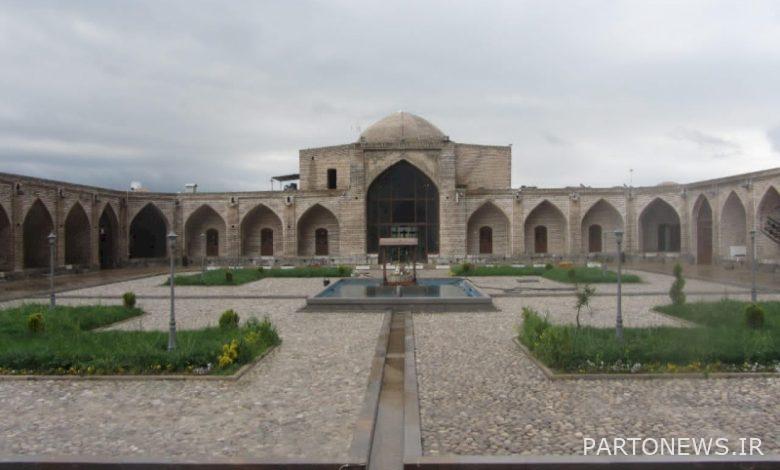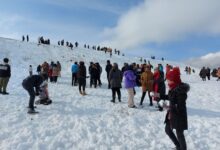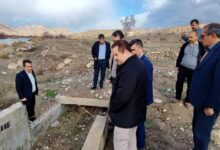The role of roads, houses and caravanserais in the history of Iran

Due to the value of roads, Iranians from the distant past began to develop and develop it, so that according to Demorgan in the Achaemenid period, the country had a special arterial network, so that, from Persepolis five roads to Susa, Prietkan, Kerman, the ports of Deilman and Hormoz It went to the Persian Gulf or from Susa to Babil, Hamedan, Persepolis and some branches from these roads to Isfahan and Bandar Dilman along the Persian Gulf.
From the time of the Achaemenids, no works related to roads such as caravanserai, guide poles, etc. have been discovered, but without a doubt, the various and well-equipped roads of that great empire have not been empty of such facilities. Among the important actions of the Achaemenids was the establishment of a printing house and the establishment of guard forts on important thoroughfares. Herodotus says, “No movement moves faster than that,” and Xenophon attributes the founding of the printing press to Cyrus, saying, “Derna can not move as fast as the chaparrals.”
The roads were the same as before during the Parthian and Sassanid eras, and no changes were made in their direction, except that the center of the roads was moved from one point to another by moving the capital from the eastern to the western parts.
The Parthian kings and later the Sassanid government made great efforts to improve the condition of the roads, and to finance the maintenance of the roads, they collected taxes on commercial goods, which were an important source of government revenue.
Roads through deserts were equipped with water wells, caravanserais, and ligaments, and there were barracks in the cities where merchants would gather and exchange goods. One of the most important roads used in Parthian and Sassanid historical periods and was the most important highway of Iranian merchants in this period, was a road starting from the center of China and crossing the plateau of Iran and entering Mesopotamia and then went to Surah and It joins the port of Antioch on the Mediterranean Sea. This route was called the Silk Road because of the silk trade.
As it was mentioned, caravanserais and ligaments were created along this route. Examples of caravanserais of the Sassanid period are Dirgchin caravanserai near Qom and Robat Anoushirvani, 40 km from Semnan to Damghan, and so on.
After the Sassanid period, during the Islamic period, during the Seljuk rule, new roads appeared and new stations were built between the roads to provide comfort for the caravans. Robat Mahi on the road from Mashhad to Sarakhs is one of the buildings of the beginning of Islam, which was built in the form of four porches during the Ghaznavid period. Other caravanserais of the beginning of Islam include Robat Sharaf, Robat Spanj, Robat Karim and others. After that, during the Mongol period, measures were taken to facilitate travel, for example, Holakokhan created basic measures for the security of the country’s roads. According to Ghazani history, this king built a bathhouse and other facilities for travelers in Tabriz next to one of the new gates of the caravanserai.
The most prosperous period of construction and restoration of caravanserais was in the Sufi period, when Shah Abbas I ordered the establishment of 999 caravanserais in order to revive the Silk Road and provide services to the pilgrims of Atbat-e-Aliat. Kermanshah, among these caravanserais we can mention Mahidasht caravanserai, Qasr Shirin and Biston caravanserai.
Bistoon Caravanserai is one of the four-aisled caravanserais whose architect has located and built it in the shadow of Bistoon and the golden point of this mountain on a land with an area of about seven thousand meters with special finesse and engineering. The materials used in this caravanserai are clean stone, brick and gypsum mortar, which its architect has roofed by creating arches and domes. There is no inscription that identifies the original founder of the caravanserai, but at the entrance of the caravanserai, three inscriptions have been installed in the Safavid and Qajar periods, which announce the time of completion and restoration of the caravanserai. One of the inscriptions is related to Shah Suleiman the Safavid, which was installed during the presidency of Sheikh Alikhan Zanganeh, the Prime Minister of Shah Suleiman, and in fact states the time of completion of the caravanserai. Of course, at the same time, Sheikh Alikhan Zanganeh painted another inscription near the inscription of Dariush Naqsh, in which he dedicates part of the lands under Bistoon to Sadat Fatemi and part of the income of those lands as a caravanserai rival for the restoration of this building. There are two other inscriptions at the entrance of the caravanserai, which belong to the time of Nasser al-Din Shah Qajar, and these inscriptions indicate the complete restoration of the caravanserai during the Nasserite rule.
After that, in the first Pahlavi period, after the caravans were closed, this building was used as a grain warehouse, and in the Pahlavi period, due to its location next to the old village of Biston, its cells were used as a place for a number of residents to live.
After the evacuation of Bistoon village in 1976, the caravanserai was abandoned for a short period of time.
For some time, the caravanserai has been used as an addiction center, and finally, after 17 years, the complex has been returned to the General Directorate of Cultural Heritage, and its restoration and restoration activities will begin in 2001. This complex was finally revived, equipped and put into operation in 1390 as one of the tourist service complexes (accommodation-reception). Today, the Biston Caravanserai Hotel welcomes tourists from all over the world with 21 rooms and suites and a capacity of more than 90 people.
.

